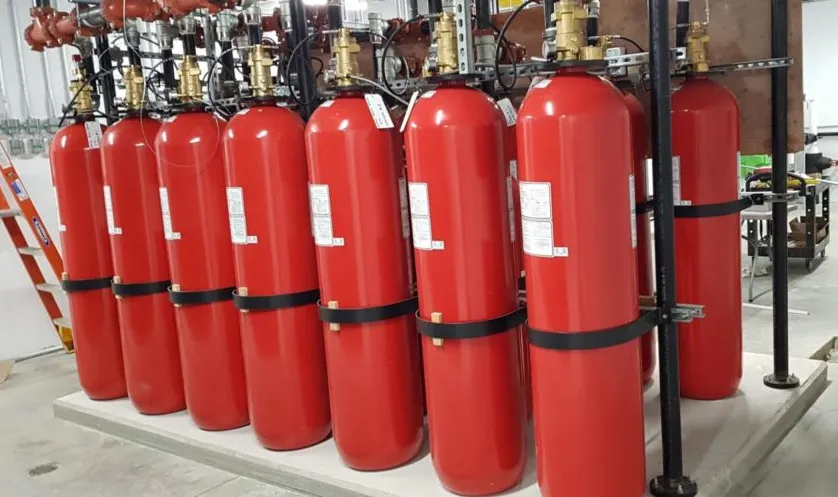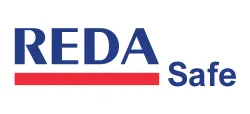Clean Agent System Types and Functions

Introduction
In today’s rapidly evolving world, ensuring the safety of critical environments and sensitive equipment from the threat of fire is paramount. Traditional fire suppression systems, while effective, often come with the downside of potential water damage or chemical residue that can harm vital electronics and machinery. Enter the realm of clean agent fire suppression systems, a revolutionary approach designed to offer superior fire protection while preserving the integrity of the space and its contents.
This blog post delves into the various types and functions of clean agent systems, highlighting their unique properties, applications, and benefits. From the widely recognized FM-200™ and Novec 1230 to the innovative solutions like Inergen, Argonite, and Nitrogen, we explore how these systems work to extinguish fires quickly and safely without leaving behind any residue. Whether you're a facility manager, safety officer, or simply interested in the latest fire suppression technologies, understanding the options available can make a significant difference in ensuring the safety and continuity of your operations. Let’s take a closer look at these clean agent systems, their mechanisms, and why they represent a significant advancement in fire safety technology.
FM-200™
FM-200™, Heptafluoropropane/HFC-227ea, is a clean agent fire suppression system contain a special non-flammable gaseous agent to extinguish fires without affecting critical electrical equipment located indoor. It is stored in cylinders as a liquid compressed gas can transform into a gas shape while running the system. Upon activation, the FM-200™ releases an odorless and colorless gas that rapidly fills the enclosed space via the pipes and special made nozzles. The gas works by removing heat from the fire, preventing the chemical reaction required for combustion, and eliminating the oxygen content to extinguish the flames.
Novec 1230
Similar to FM-200TM, Novec 1230 is another clean agent fire suppression system. It discharges a gas that suppresses the flames by quickly cooling the fire, preventing it from flaming and lowering the oxygen content. Although both gases are similar, while the major differences among these two gases are in terms of global warming potential impact and time of gas decomposition in the atmosphere. It is stored as a liquid, pressurized with nitrogen, in a cylinder. In the near future, NOVEC 1230 will be replaced with safer agent for the ground water named “Fluoro-K”
Inergen
The composition of INERGEN IG-541 consists of mixtures of Nitrogen, Carbon Dioxide and any one of the Inert Gases including Helium, Neon, Argon, Krypton and Xenon. INERGEN agent extinguishes fire by reducing the oxygen content below that which facilitates combustion. When INERGEN agent is discharged into a room, it spreads the proper mixture of gases that still allow a person to breathe in a reduced oxygen atmosphere. INERGEN can cover a much larger area and can protect against multiple hazards taking into consideration more slow reaction and storage area required to be calculated by skilled and qualified engineering team.
Argonite
Argonite IG55 is a mixture of argon and nitrogen gases with absence of carbon dioxide. Similar to INERGEN, it works by displacing oxygen from the protected area, creating an oxygen-deficient environment that prevents the fire from spreading or sustaining itself. In addition, it requires sufficient large storage area because of the higher number of cylinders in comparison to NOVEC1230. Argonite is safer for humans compared with INERGEN and the reason behind that is INERGEN having Co2 in their mixture of gases - this can cause hyperventilation - meaning that it could potentially become more dangerous.
Nitrogen
By reducing the oxygen content below that which facilitates combustion, Nitrogen IG-100 consisting of 100% nitrogen having the same extinguishing technique as in Argonite and INERGEN, where the oxygen concentration is minimized by the application of IG-100 until it reaches a level where combustion is no longer supported. During maintenance or installation, the potential of hazard gas relief is possible due to high-pressurized system.
The choice of a fire suppression system depends on factors like the protected area, fire risks, environmental factors, and regulations. Professional fire protection engineers and experts should be consulted to determine the most suitable system for a specific application. To choose the most appropriate system for a given application, professional specialist fire engineers should be involved. When compared to traditional wet suppression systems, clean agent systems offer a number of benefits, including:
1) Effective Fire Suppression
2) Ease of setup and maintain
3) Safe for Occupants
4) No Residue or less Cleanup
5) Rapid Discharge and Reaction Time
6) Environmentally Friendly
7) Versatility and Compatibility
Conclusion
The evolution of fire suppression technology has markedly shifted towards prioritizing both effectiveness and the safety of the environment and equipment. Clean agent fire suppression systems, such as FM-200™, Novec 1230, Inergen, Argonite, and Nitrogen, stand at the cutting edge of this innovative transition. These systems deliver a powerful, residue-free approach to combatting fire threats, ensuring the protection of both valuable assets and the well-being of individuals within the premises. Their swift action, minimal post-event cleanup, environmental consciousness, and user safety highlight their pivotal role in contemporary fire safety protocols.
Choosing the right fire suppression system is a nuanced decision, necessitating the insight of seasoned fire protection engineers to match the unique demands and hazards of each setting. As technology advances, the significance of clean agents in fire safety is set to grow, further augmenting our capacity to safeguard critical spaces against the ravages of fire. Keeping abreast of these advancements allows organizations to adopt the most fitting, efficient, and secure fire suppression strategies available, underscoring a commitment to safety and preservation in today’s risk-aware environment.
